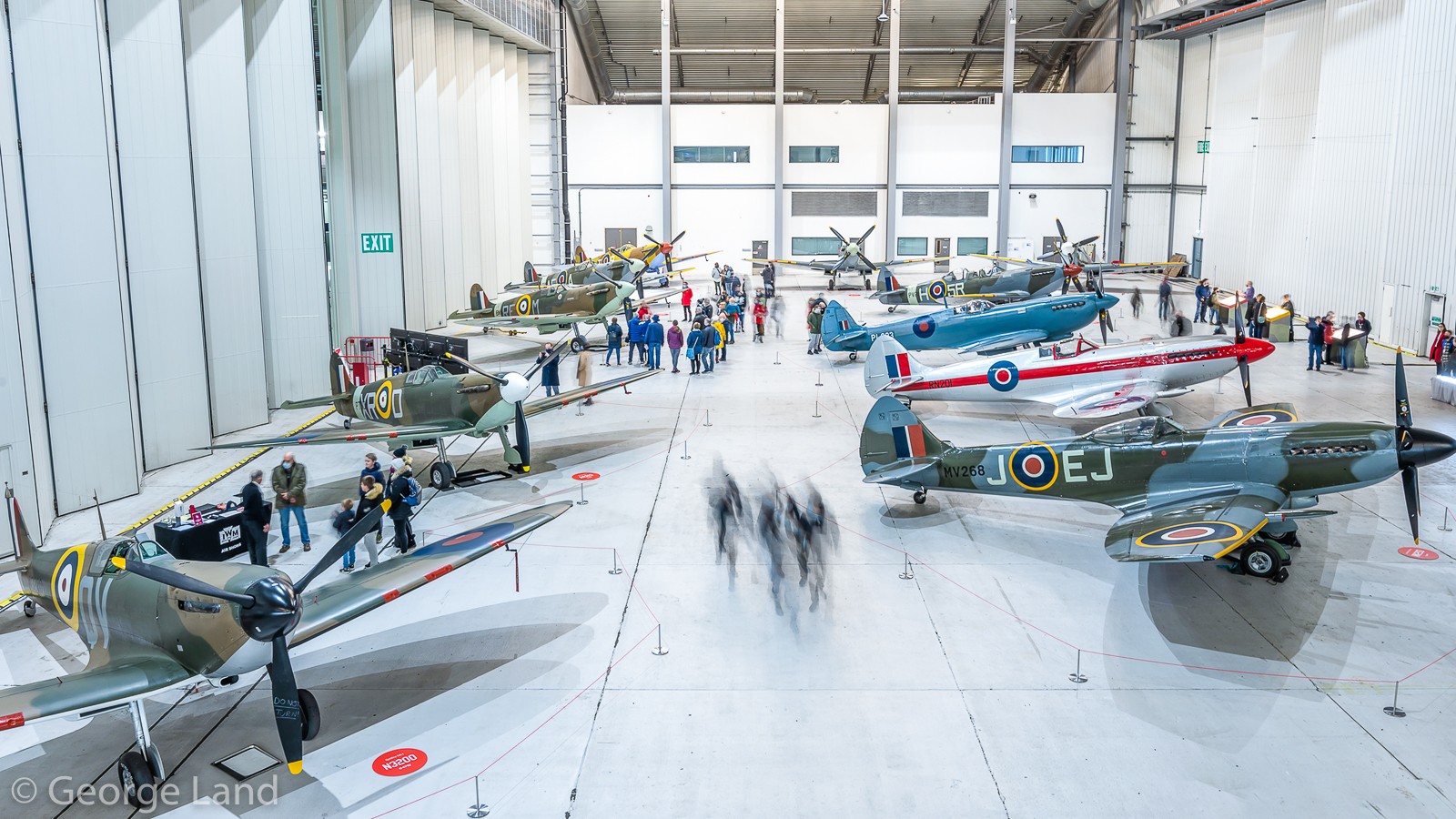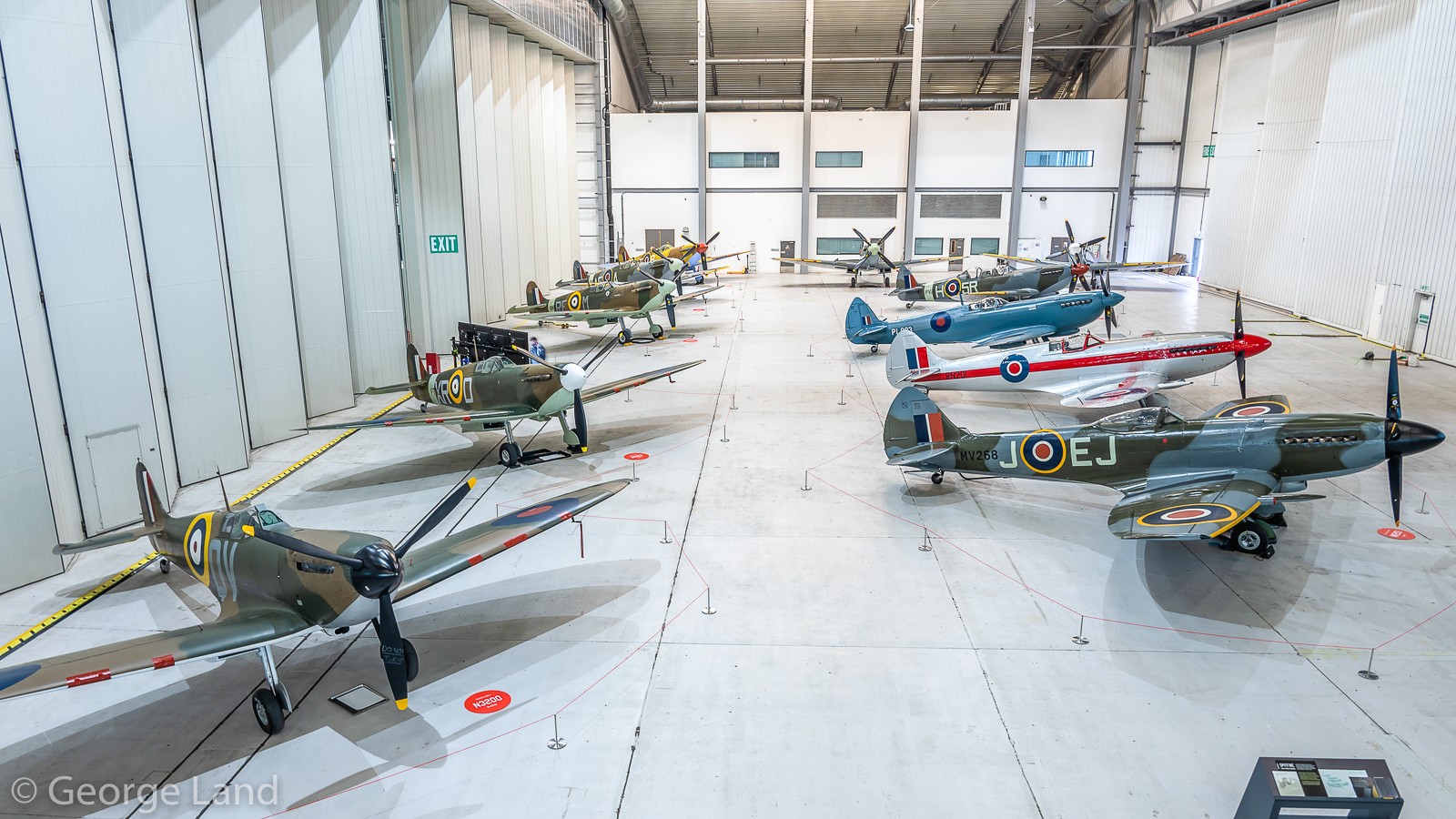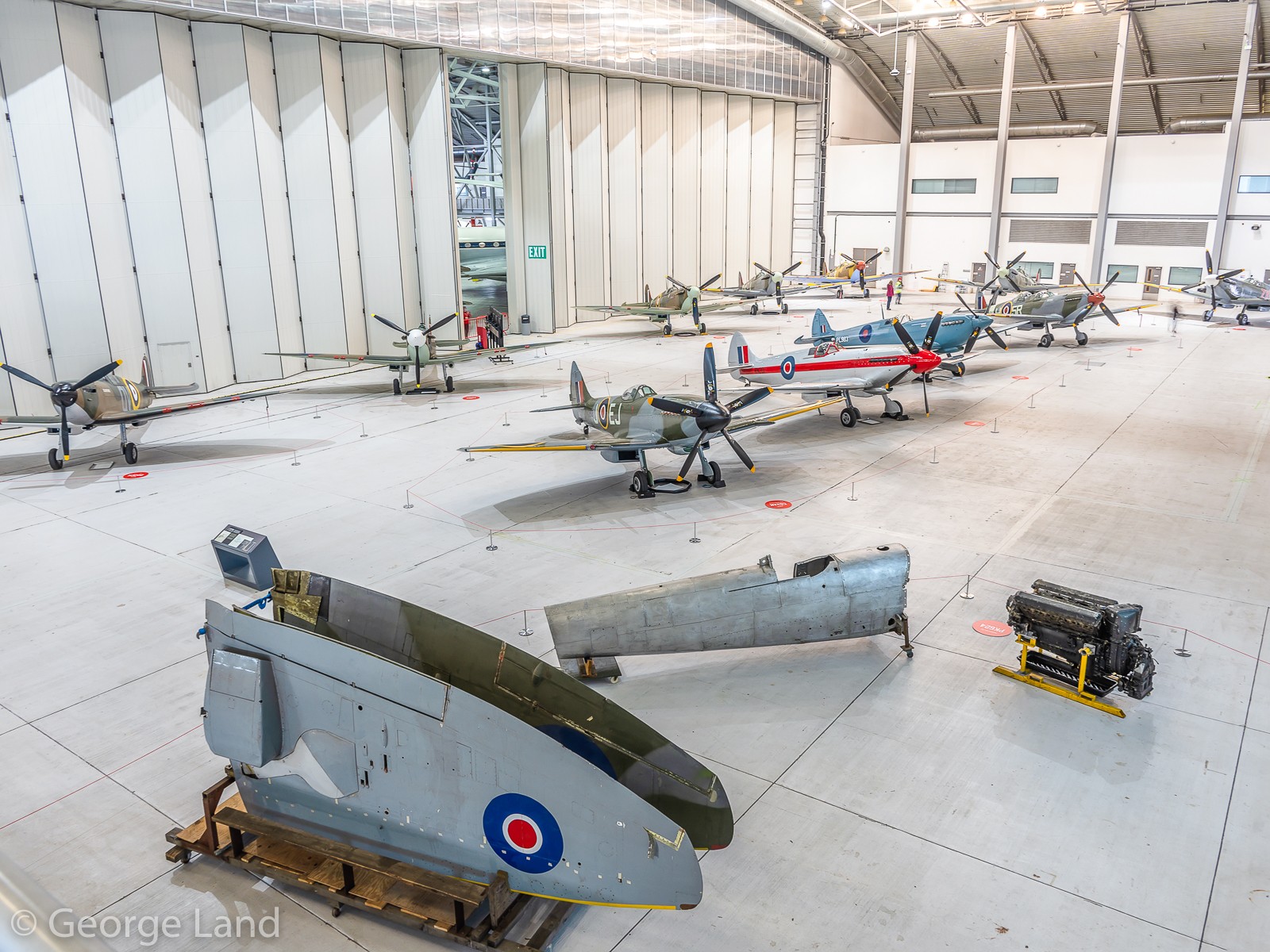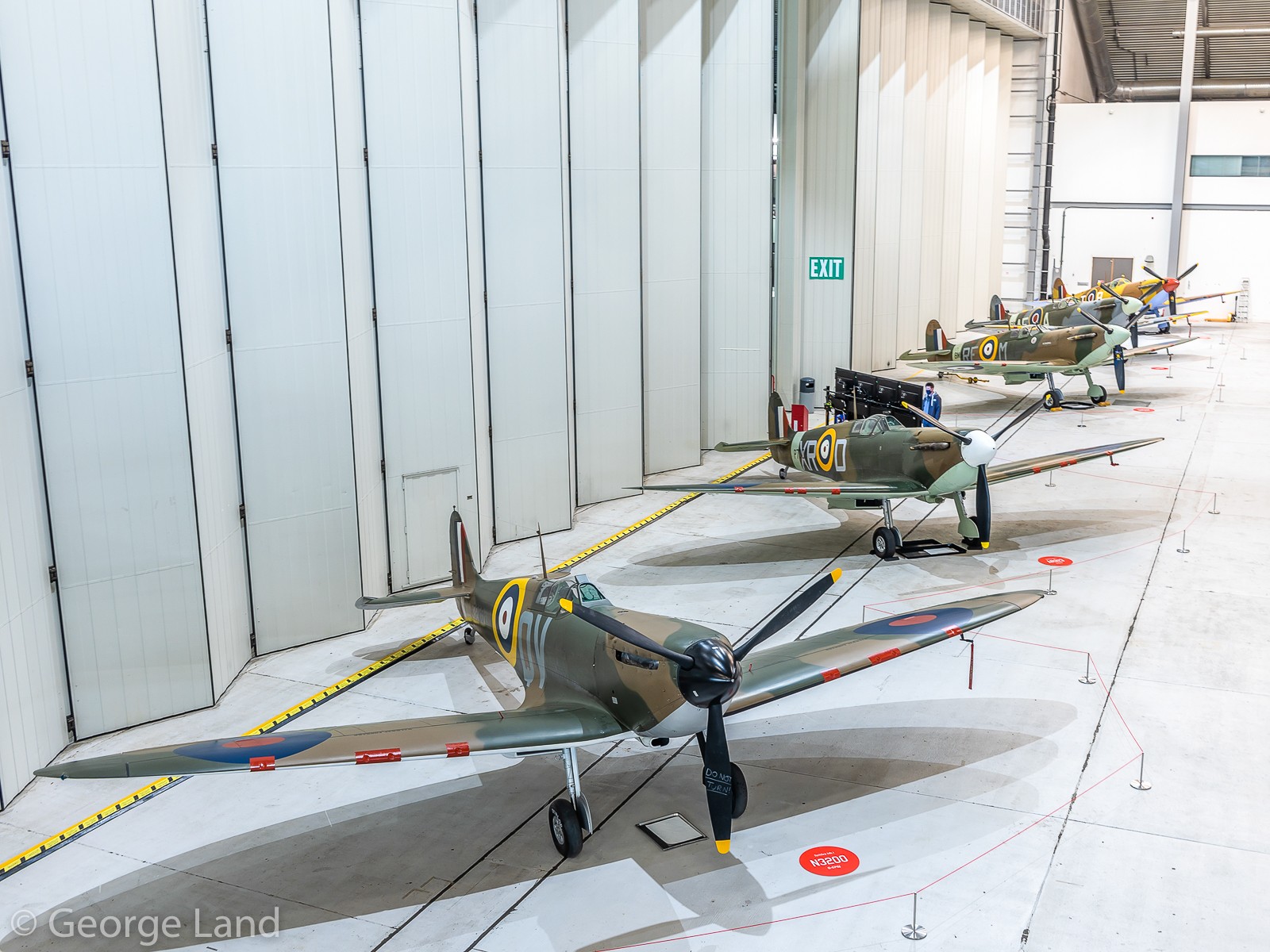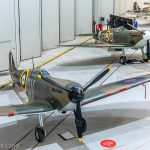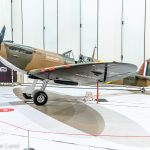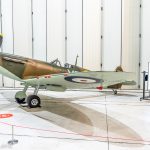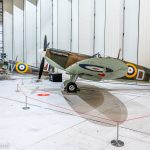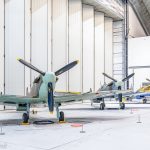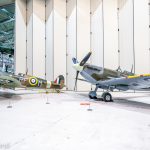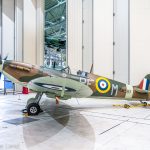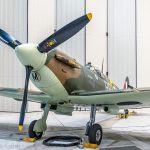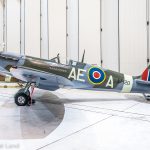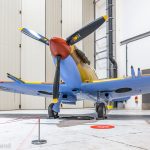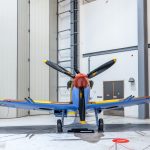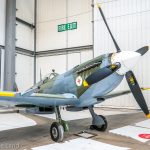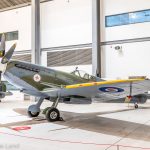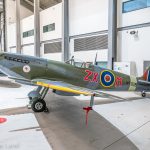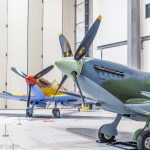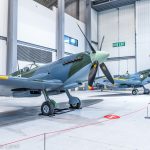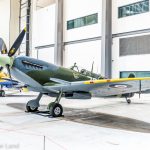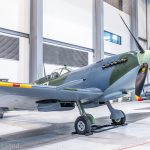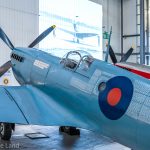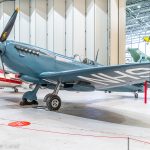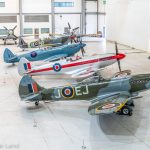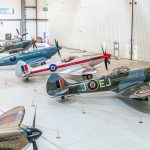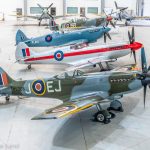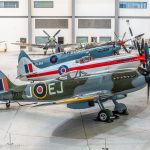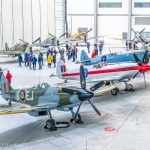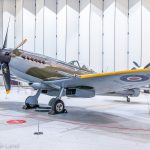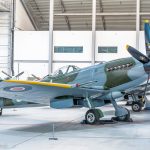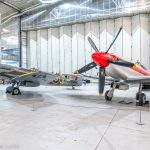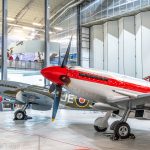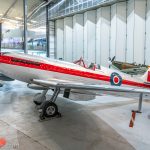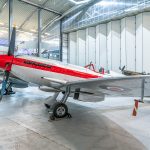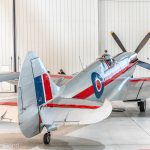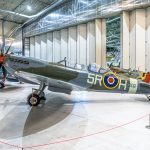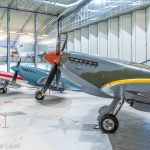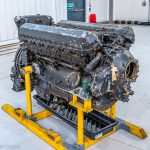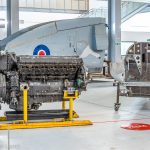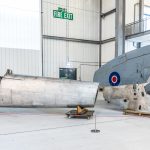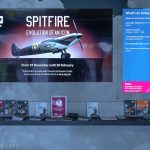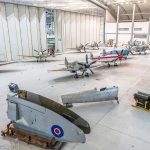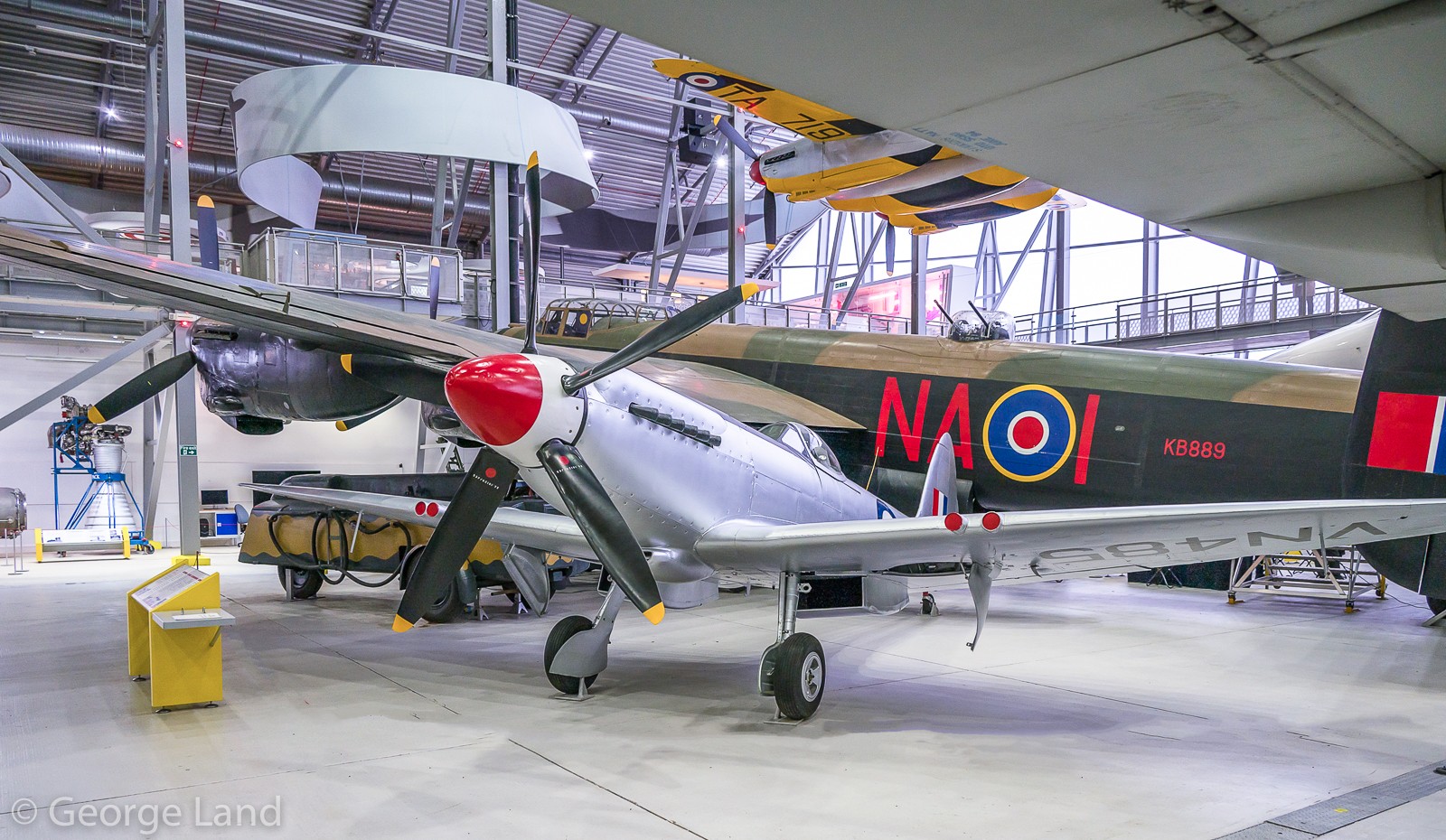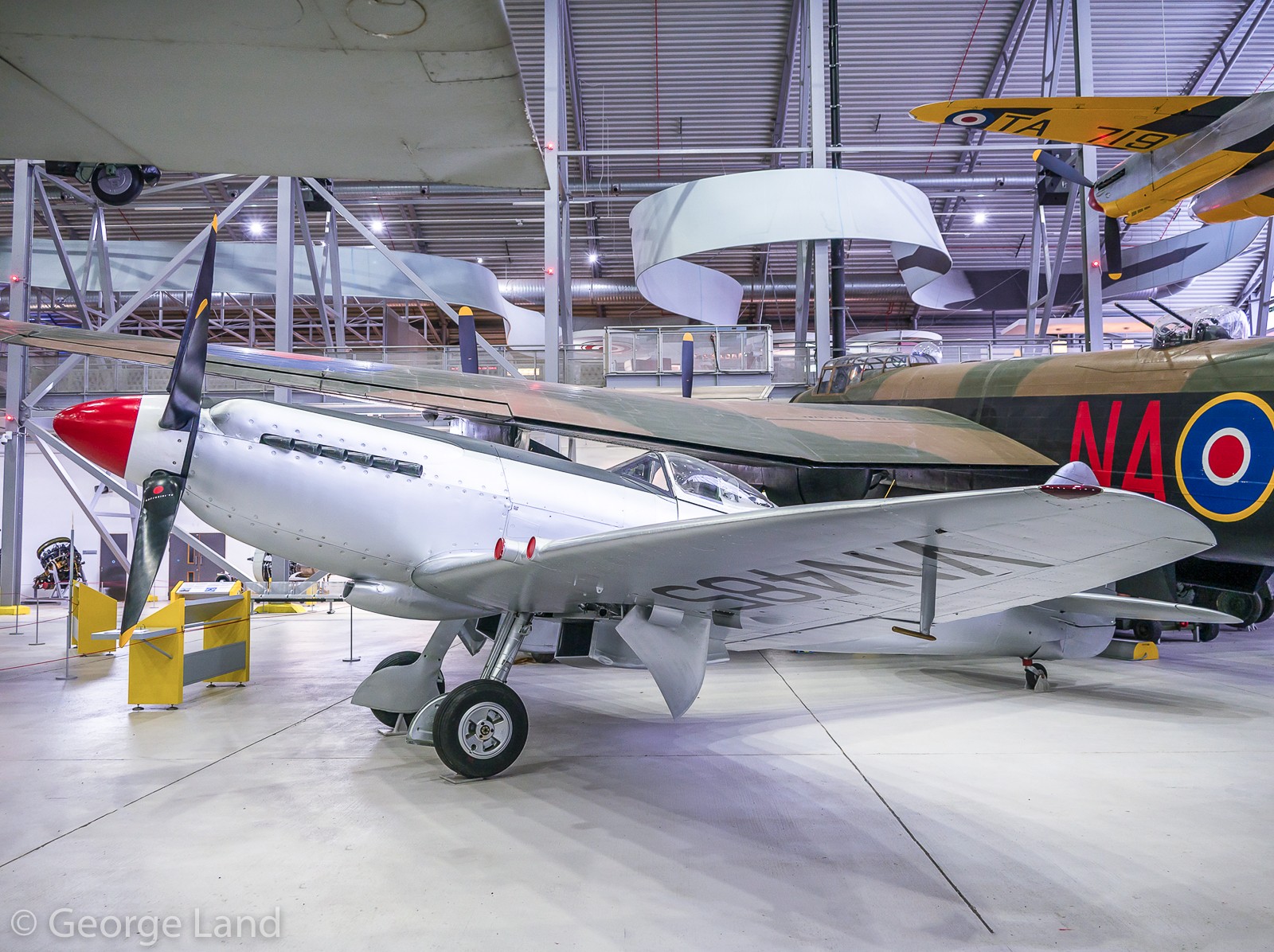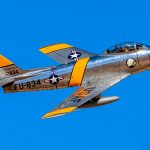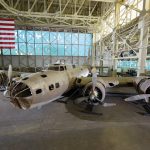As we reported in November, Britain’s Imperial War Museum was soon due to unveil a special exhibit at their Duxford location dedicated to the superlative Supermarine Spitfire. On December 27th, our very own George Land attended the opening, which featured twelve Spitfires of various marques to illustrate how the iconic design evolved over its decade-long production run. We thought our readers would enjoy seeing photographs George took that day, along with details adapted from his text…
Spitfire: Evolution of an Icon
by George Land
Organized by Imperial War Museum (IWM) Duxford and staged in the museum’s AirSpace Hangar, Spitfire: Evolution of an Icon was initially supposed to take place during 2020, but of course the pandemic intervened, and forced a delay until the end of 2021. The exhibit will now run from December 27th, 2021 through February 20th, 2022. Arranged in the front hall within the AirSpace hangar, the twelve Spitfires on show ranged from the IWM’s own airworthy Spitfire F.Mk.Ia (N3200) through to The Fighter Collection’s Spitfire F.Mk.22 (PK624). Interestingly, the latter airframe, presently unrestored, is normally tucked away out of public view in Duxford’s Hangar 2, so it was a nice opportunity to see this reclusive and rare variant up close for a change. Museum staff were on hand in the hall to provide further information about the aircraft in the exhibit while small activity displays demonstrated different aspects of the Spitfire. Furthermore, a retail area nearby offered various Spitfire-related products.
As already intimated, the Spitfires participating in the exhibit revealed the different stages in the type’s development. The design evolution was immediately evident across the range of marques on display, from the dainty-looking Mk.I with its 1,000 hp Rolls-Royce Merlin, three-bladed propeller and .303 calibre machine guns, through successive variants with more powerful Merlins and beefier armament up to the far more muscular, almost brutish visage of the Griffon-powered examples towards the end of the type’s development.
The display also revealed how much the Spitfire’s famous elliptical wing changed as the type-design progressed. The earliest variants were armed with eight .303 calibre machine guns, but further development adapted the wings both aerodynamically and structurally to accommodate different functional requirements, from the addition of more powerful armament and even for no armament at all – as was the case for dedicated photo-reconnaissance Spitfires. Indeed those latter examples had wet-wing leading edges for additional fuel storage in place of the armament, extending the Spitfire’s range considerably! These differences in wing style were often identified with a specific suffix attached to the variant designation; for instance a Spitfire Mk.Vb would have a b-type wing, designed specifically to house a single 20mm cannon and two .303 machine guns within each side. Some of the changes in wing profile also arrived due to the specific environment in which a particular Spitfire was intended to excel; for some, this meant clipping the wings to allow better maneuverability at low levels, while others had extended wingtips for higher altitude performance. Each Spitfire model usually included a number of sub-variants, and these were typically identified with a designation prefix. For example, a pure fighter’s designation would begin with an “F”, whereas “LF” indicated a low altitude fighter, “HF” a high altitude fighter, “PR” meant photo reconnaissance, “FR” Fighter Reconnaissance and, of course, “Tr” referred to the two-seat trainer sub-variants.
The aircraft on display in the exhibit included the following examples:
|
Model |
s/n |
Owner |
Representative Livery |
|---|---|---|---|
| F Mk.Ia |
N3200 |
Imperial War Museum |
No.19 SQN, RAF Duxford – ‘QV’ Squadron Leader Geoffrey Stephenson |
| F Mk.Ia |
AR213 |
Commanche Warbirds |
No.71 (Eagle) SQN, RAF Church Fenton – P7308 ‘XR-D’ |
| F Mk.Vb |
BM597 |
Historic Aircraft Collection |
No.303 (Polish) SQN – Mk.llb ‘RF-M’ Sumatra F/O Wiktor Strzembosz |
| LF Mk.Vb |
EP120 |
The Fighter Collection |
No.402 (City of Winnipeg) SQN RCAF – ‘AE-A’ |
| F Mk.Vc |
JG891 |
Commanche Warbirds |
No 249 SQN, Malta – ‘T-B’ FS John “Jack” G. Hughes RCAF |
| HF Mk.VIIIc |
MV154 |
Max Alpha Aviation |
No.145 SQN, Italy – MT928 ‘ZX-M’ Sqn Ldr G.R.S.McKay |
| LF Mk.IX |
MH434 |
Old Flying Machine Company |
No.222 (Natal) SQN ‘ZD-B’ Mylcraine Flt Lt Henry Lardner-Burke DFC |
| Tr.9 |
PV202* |
Aircraft Restoration Company |
No.33 SQN – ‘5H-R’ |
| PR Mk.XI |
PL983 |
Aircraft Restoration Company |
No.4 SQN – ‘L’, with “THANK U NHS” under wing |
| F Mk.XIVe |
RN201 |
Aerial Speed Icons |
No.41 SQN – 1947 Blackpool Air Races |
| FR Mk.XIVe |
MV293 |
Anglia Aircraft Restorations |
No.443 SQN RCAF – MV268 ‘JE-J’ AVM ‘Johnnie’ Johnson |
| F Mk.22 |
PK624 |
The Fighter Collection |
Future restoration into original No.614 (County of Glamorgan) SQN colors |
*(Note: Tr.9 PT462 will substitute for PV202 at some stage in the show)
While The Fighter Collection’s F Mk.22 PK624 was not represented in its complete form, an example of the nearly identical F Mk.24 (VN485) was on view just beyond the exhibit doors for those interested in seeing how strikingly different these ultimate variants of the Spitfire appeared relative to their forebears. While it was a pity that VN485 could not have joined the collection in the formal exhibit, extricating the airframe from its position in the main AirSpace hangar would have presented a significant challenge, as a number of large aircraft were in the way.
Regardless, Spitfire: Evolution of an Icon was a triumph, and a hearty congratulations must go to the Imperial War Museum, along with its partners, for conceiving and executing such a fascinating exhibit. Indeed, the show is proving to be a great success with more than 1,000 visitors passing through on the first day alone and great signs that its popularity will continue – proving how beloved the Spitfire is with the British public, and not just amongst aviation enthusiasts, but rather the greater community at large. Let’s hope that this will encourage the Imperial War Museum to stage similar exhibitions over the Christmas/New Year period in 2022/23 – with a possible subject featuring Hawker aircraft, since so many examples, from the 1930s-era biplanes through to the jump-jets of the 1990s are on hand at Duxford!
Many thanks indeed to George Land for his article and images!







